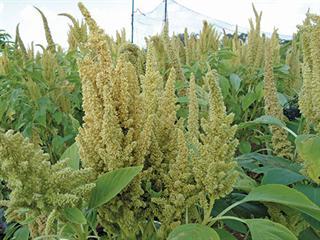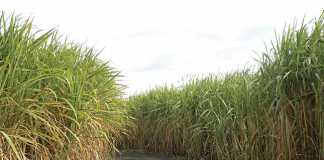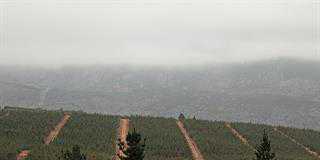
Pseudo-grains are produced by dicotyledonous plants, in contrast to grains such as wheat and maize, which are monocotyledonous grasses.Quinoa (Chenopodium quinoa) and grain amaranth species (Amaranthus cruentus, A. caudatus and A. hypochondriacus) show promise for development as agricultural crops in South Africa. Drought-tolerant and adaptable, they are worth investigating with a view to commercialisation.
Cultivation production data on these crops, under local conditions, is thin. Small seeds, lack of registered chemical crop protection and lack of local production statistics mean that large-scale commercial production needs research. South Africans are familiar with the wild relatives of amaranth and quinoa. They include weeds such as pigweed (Amaranthus spp) and lamb’s-quarter (Chenopodium album).
Grain Amaranth
The genus Amaranthus grows in various agro-climatic zones. Grain amaranth is drought- tolerant but there must be sufficient moisture at planting, with enough light and heat. Frost damage at high altitudes could be a problem with early planting, but frost also ensures a crop that is dry enough for mechanical harvesting. The crop needs about four months from planting to harvest. Grain amaranth varieties with uniform growth still have to be developed and no such varieties are registered here. The amaranth lines currently available are variable in their uniformity and degree of adaptation.
Cultivation
At about 2 500 seeds/g to 3 500 seeds/g, the small seeds require a firm seedbed. Amaranth seed is planted 1cm deep and cultivation production generally favours rolling and light harrowing after discing. Poor germination is common, with losses of up to 50% when the germination shortfall is not compensated for. The optimum plant population has yet to be established for South Africa, but a density of 60 000/ ha is considered suitable for dryland conditions.
At higher densities, plants mature more evenly and produce single inflorescences, which is helpful with mechanical harvesting. Planters designed for teff, carrots or celery can be successfully used for planting. Grain drills are not recommended. Amaranth seed can be mixed with a carrier such as maize meal for more uniform planting. Seedlings transplant successfully at the four-leaf stage.
Irrigation and fertilisation
After planting, which needs adequate water, occasional irrigation may be necessary during the four-month growing season, even though the crop is drought-tolerant. Trials have produced grain amaranth successfully under drip- irrigation conditions. Little information on fertilisation requirements is available for South African soils and conditions. Amaranth is adapted to slightly acidic to slightly basic (pH 6,5 to 7,5) soils. Chemical fertiliser such as 2:3:2 or 3:2:1 and manure can be used at an intermediate rate similar to the rate for sunflower.
Pests and diseases
It is important to make sure that lands are weed-free before planting. Grain amaranth grows slowly during the first weeks, which could make repeated tilling to control weeds necessary. After this, the growth rate increases rapidly and plants outcompete weeds. Species competitive in amaranth lands are nutsedge (Cyperus spp.), lamb’s-quarter (Chenopodium album) and pigweed (Amaranthus thunbergi and A. hybridus). Land with a high population of these weeds is not suitable for amaranth production.
Grain amaranth seeds are not dormant and plant growth is moderate shortly after germination, so grain amaranth is not likely to be a problem weed in other crops. No herbicides are registered in South Africa for use with amaranth. Insect pests – leaf, stem, root, pollen, flower and seed feeders – occur on all amaranth plant parts, especially on developing flower stalks. Those that feed on pollen, flowers and seed are the most serious pests for grain producers.
Sap-sucking bugs such as Nysius natalensis directly damage developing seed, reducing yield and quality. Stem-boring larvae of three weevil species (Hypolixus haerens, Baris dodonis and B. amaranthi) weaken stems and expose them to fungal attack. Amaranth plants are vigorous growers that can compensate for some degree of leaf damage, so plants are seldom if ever defoliated on the land.
Birds feeding on the seed may be a problem, the severity of which will be related to the size of plantings. Smaller plantings may be more severely damaged. The time lag between ripening and harvesting also plays a role in the degree of damage that birds inflict.
Diseases may develop in large monoculture stands. Damping-off of young seedlings caused by Pythium can be a problem in certain conditions. Stem canker is caused by Phorma or Rhizoctonia. The effect of pests and diseases can be mitigated by controlling the weeds that serve as hosts to the pests and diseases. There are no insecticides or fungicides registered for use on amaranth. Integrated pest management strategies are currently being considered for further investigation.
Manual Harvesting
Incorrect harvesting can mean loss of or damage to a large proportion of the seed in grain amaranth production. If the plants do not die back naturally, a ‘killing’ frost, followed by a week of good drying weather, must precede the harvest. Wet stems and leaves hinder mechanical harvesting, while shattering and seed loss will occur if the crop is left on the land to dry out for too long.
Mechanical harvesting is part of no741/0mal practice in other parts of the world. The drum speed and wind of the combine harvester must be reduced so that fine seeds do not blow away. Manual harvesting entails cutting and removing the inflorescences for drying in windrows. Seeds are threshed and winnowed to separate the grain from the chaff and other plant material.
Traditionally in the Americas, dried plants were strewn out on cloth stretched over the ground. A dance was performed on the dried plants to loosen the seeds. Dry inflorescences may also be beaten with ropes or sticks. Plant residue and foreign material must be removed before storage. Mechanical cleaning is a process involving the use of sieves or a gravitation table.
The maximum grain moisture for storage is 11%. Grain was once stored underground in large earthenware pots, but today it is placed in barns, granaries or crates. The yield potential for grain amaranth in South Africa is still unknown. Yields in America are from 800kg/ ha to 1 500kg/ha.
Quinoa
Quinoa, declared the crop of the year by the UN in 2013, originates from high altitudes in the South American Andes, where it has adapted to shorter days and cool temperatures, It is generally more sensitive to temperature than amaranth, so it is advisable to follow routine procedure and test the crop before planting a larger area. Shorter day lengths will inevitably lead to earlier flowering.
In South America, quinoa is produced on marginal agricultural land with low fertility soils. A temperature above 35°C may cause plant dormancy or pollen sterility. Quinoa tolerates light frost, but after seed set, it can tolerate temperature as low as -6°C.
Varieties
No uniform variety of quinoa has been developed and none is registered in South Africa. Available material consists of selected lines varying in uniformity and degree of adaption to drought or cold.
Cultivation and fertiliser
Quinoa prefers sandy-loam to loamy-sand soil. In South America, it is found in soil with poor drainage, low natural fertility, and pH varying from very acidic (4,8) to alkaline (8,5) conditions. Quinoa seed germinates best in cool soil with a temperature of between 7°C and 10°C. Given the right amount of moisture, the seed will germinate within 24 hours and emerge three to five days later. Seed can be vernalised (refrigerated for a week) to improve germination.
Quinoa needs a level, well-drained seedbed with a planting depth of 1cm. This varies slightly according to soil type and moisture availability. If planted too deeply or superficially, the small seeds can either drown or dehydrate.
In Colorado in the USA, a density of 52 000 plants/ ha is optimal for production. Optimal fertilisation rates in South Africa are not known, but the crop responds well to nitrogen fertiliser. The average annual water requirement varies from 250mm to 400mm on sandy-loam soils.
Potential pests and diseases
Quinoa pests and diseases in South Africa are largely unknown and no pesticides or fungicides have been registered for use in quinoa. The NuGrain Consortium holds the opinion that there would be some overlap between quinoa and amaranth pests. Candidates likely to emerge as pests in South Africa include aphids and the beet army worm (Spodoptera exigua), which occur locally and are pests in the USA.
Insect pests may be less of a limiting factor for quinoa than for amaranth. Bitter-tasting saponins, found in the pericarp surrounding the seed, limit feeding damage by birds, mammals and insects. This protection may be washed away in heavy rain, however. Viruses found on spinach and beet root have been seen in quinoa lands.
Diseases such as damping off (Sclerotium rolfsii), downy mildew (Peronospora farinosa), stalk rot (Phoma exigua var. foveata), leaf spot (Ascochyta hyalospora), grey mould (Botrytis cinerea), and bacterial blight (Pseudomonas spp.) have caused significant losses in South and North America and Great Britain. Weeds are more difficult to control in quinoa lands because it is slow growing and not well adapted to competition with fast-growing weeds. No herbicides for quinoa are registered in South Africa. A directional spray of broad spectrum contact herbicide could be used, but this may present difficulties on a large scale.
Harvesting – when and how
Quinoa seed is ready for harvesting when the plants have lost their leaves, dried and turned pale yellow or red, and the seed can barely be dented with a fingernail. It is easy to thresh seed manually when plants have reached this stage.
Quinoa can also be harvested with a combine harvester after it has dried on the land. A sorghum header attachment with a smaller screen to accommodate the smaller and lighter quinoa seed can be used during harvest.
A fanning mill and gravity separator removes trash from seed after harvesting. The grain must be dry before storage. Rain at harvesting will cause problems, as mature seed germinates within 24 hours after exposure to moisture. The saponins can be removed by soaking the seed in water or using mechanical methods. Yields of 3t/ ha to 5t/ ha have been reported elsewhere in the world.
Email Willem Jansen van Rensburg of the Vegetable and Ornamental Plant Institute at ARC Roodeplaat at [email protected].













